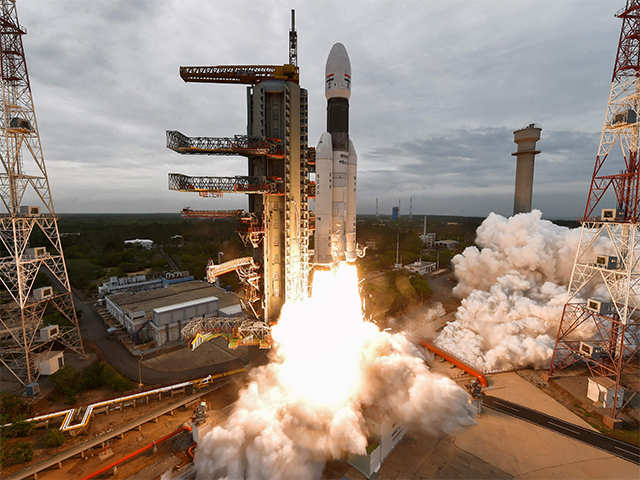- Joined
- Aug 28, 2011
- Messages
- 3,990
- Points
- 63
https://www.independent.co.uk/life-...ardigrades-beresheet-alien-life-a9044276.html
Crashed Israeli satellite dropped Earth’s most resilient lifeform on the Moon
Unusual little lifeforms could live for years
Click to follow
The Independent Tech
There may be life on the Moon.
A spacecraft that crashed landed on the lunar surface have spilled tiny bugs across it.
What's more, the new residents are tardigrades – considered the most resilient life form on Earth, they could be able to survive on the alien surface of the Moon.
The visitors made their way to the Moon on board the Beresheet probe, which was designed to become the first private lander to successfully arrive on the surface. When it arrived in April, however, it crashed, and the mission was aborted.
For most people and the majority of the mission, that catastrophic event brought everything to a close. But the tardigrades – true to their reputation for being hardy – might have survived the crashed and been spread across the surface, where they could be living on today.
Best NASA pictures of the month - July 2019
Show all 10
“Ironically, our payload may be the only surviving thing from that mission,” Nova Spivack, who helped get them there, told Wired, which first reported on the tardigrades' space exploration mission.
Read more
Mr Spivack founded the Arch Mission Foundation, which is trying to leave copies of human knowledge around the world. He and his organisation loaded the Beresheet lander up with a library that could serve as a summary of life on Earth: 30 million pages of information, samples of human DNA, and the tardigrades.
Tardigrades were first discovered in the 18th century, and have fascinated scientists ever since. They are tiny, measuring just half a milimetre long, and are found all around Earth.
Much of the reason for the fascination is just how able they are to withstand extreme environments and survive. They have shown the ability to be exposed to very high and low temperatures, intense pressure, as well as being deprived of air, food and water, as well as already demonstrating that they can live after being put in outer space.
They do that party by going into a very strange hibernation, where they can switch off a variety of biological processes and then restart them again when they wake back up. They could be doing that on the Moon, scientists warn, ready to be revived when conditions are right.
As such, scientists don't think that the tardigrades will be thriving on the Moon. But they could be waiting there ready to be picked up and revived, they say, and could stay in that state for years.
On other planets that could potentially be home to life, Nasa and other space agencies are very careful about contaminating the surface with life from the Earth. But the Moon is considered dead and so restrictions are much less – with Apollo astronauts leaving bacteria there in the fecal matter they dropped on the surface.
More about
tardigrades | The moon
INDY/LIFE newsletter
Be inspired with the latest lifestyle trends
Comments
Share your thoughts and debate the big issues
Learn more
Loading comments...
- News
- Politics
- Voices
- Final Say
- Sport
- Culture
- Video
- Indy/Life
- Happy List
- IndyBest
- Long Reads
- indy100
- Vouchers
- Minds
Crashed Israeli satellite dropped Earth’s most resilient lifeform on the Moon
Unusual little lifeforms could live for years
- Andrew Griffin
- @_andrew_griffin
- Thursday 8 August 2019 11:47
Click to follow
The Independent Tech
There may be life on the Moon.
A spacecraft that crashed landed on the lunar surface have spilled tiny bugs across it.
What's more, the new residents are tardigrades – considered the most resilient life form on Earth, they could be able to survive on the alien surface of the Moon.
The visitors made their way to the Moon on board the Beresheet probe, which was designed to become the first private lander to successfully arrive on the surface. When it arrived in April, however, it crashed, and the mission was aborted.
For most people and the majority of the mission, that catastrophic event brought everything to a close. But the tardigrades – true to their reputation for being hardy – might have survived the crashed and been spread across the surface, where they could be living on today.
Best NASA pictures of the month - July 2019
Show all 10
“Ironically, our payload may be the only surviving thing from that mission,” Nova Spivack, who helped get them there, told Wired, which first reported on the tardigrades' space exploration mission.
Read more
Mr Spivack founded the Arch Mission Foundation, which is trying to leave copies of human knowledge around the world. He and his organisation loaded the Beresheet lander up with a library that could serve as a summary of life on Earth: 30 million pages of information, samples of human DNA, and the tardigrades.
Tardigrades were first discovered in the 18th century, and have fascinated scientists ever since. They are tiny, measuring just half a milimetre long, and are found all around Earth.
Much of the reason for the fascination is just how able they are to withstand extreme environments and survive. They have shown the ability to be exposed to very high and low temperatures, intense pressure, as well as being deprived of air, food and water, as well as already demonstrating that they can live after being put in outer space.
They do that party by going into a very strange hibernation, where they can switch off a variety of biological processes and then restart them again when they wake back up. They could be doing that on the Moon, scientists warn, ready to be revived when conditions are right.
As such, scientists don't think that the tardigrades will be thriving on the Moon. But they could be waiting there ready to be picked up and revived, they say, and could stay in that state for years.
On other planets that could potentially be home to life, Nasa and other space agencies are very careful about contaminating the surface with life from the Earth. But the Moon is considered dead and so restrictions are much less – with Apollo astronauts leaving bacteria there in the fecal matter they dropped on the surface.
More about
tardigrades | The moon
INDY/LIFE newsletter
Be inspired with the latest lifestyle trends
Comments
Share your thoughts and debate the big issues
Learn more
Loading comments...


